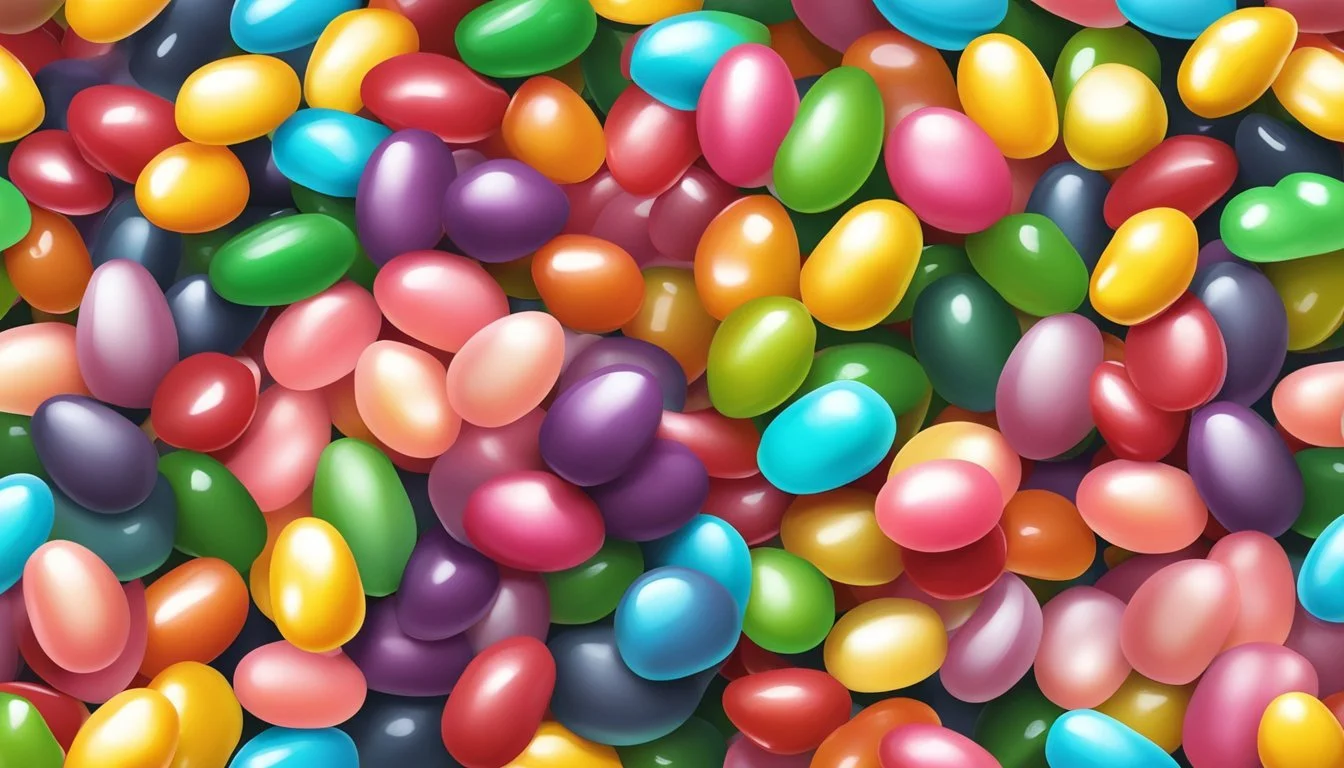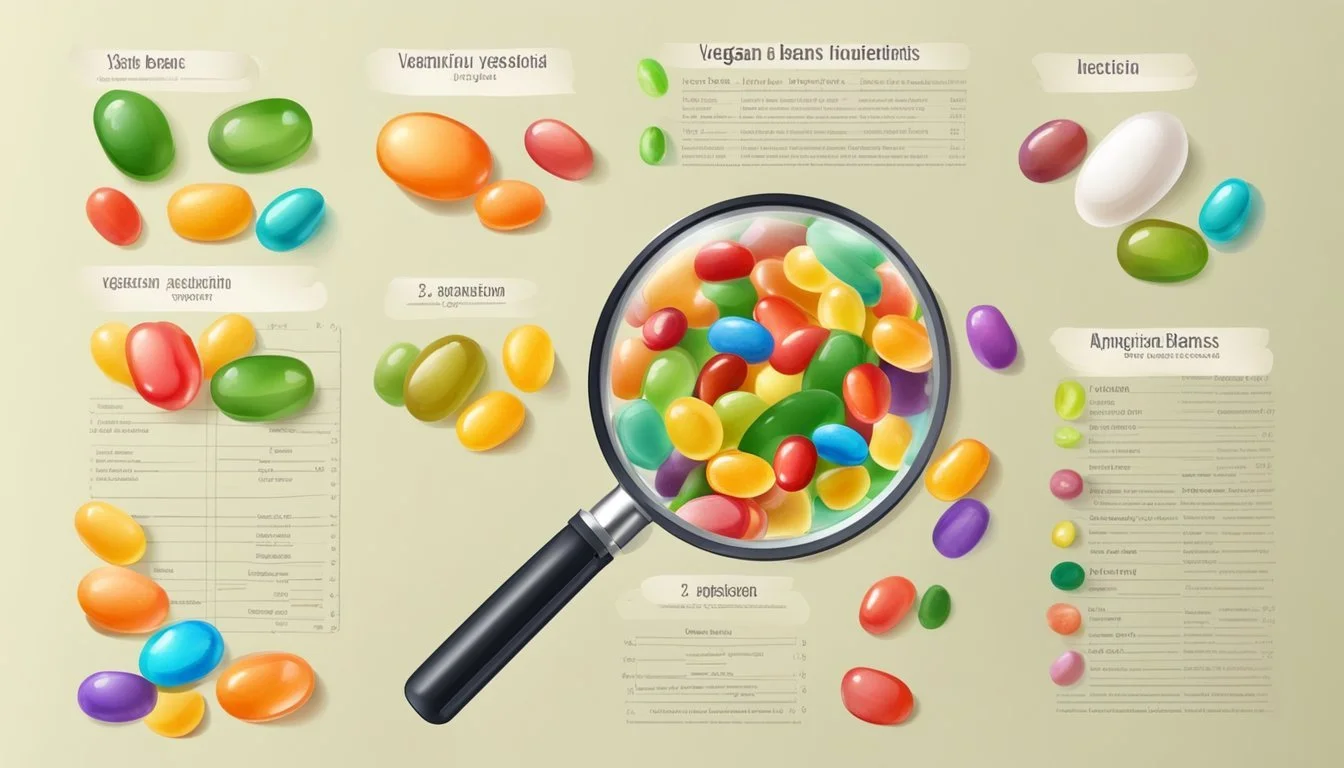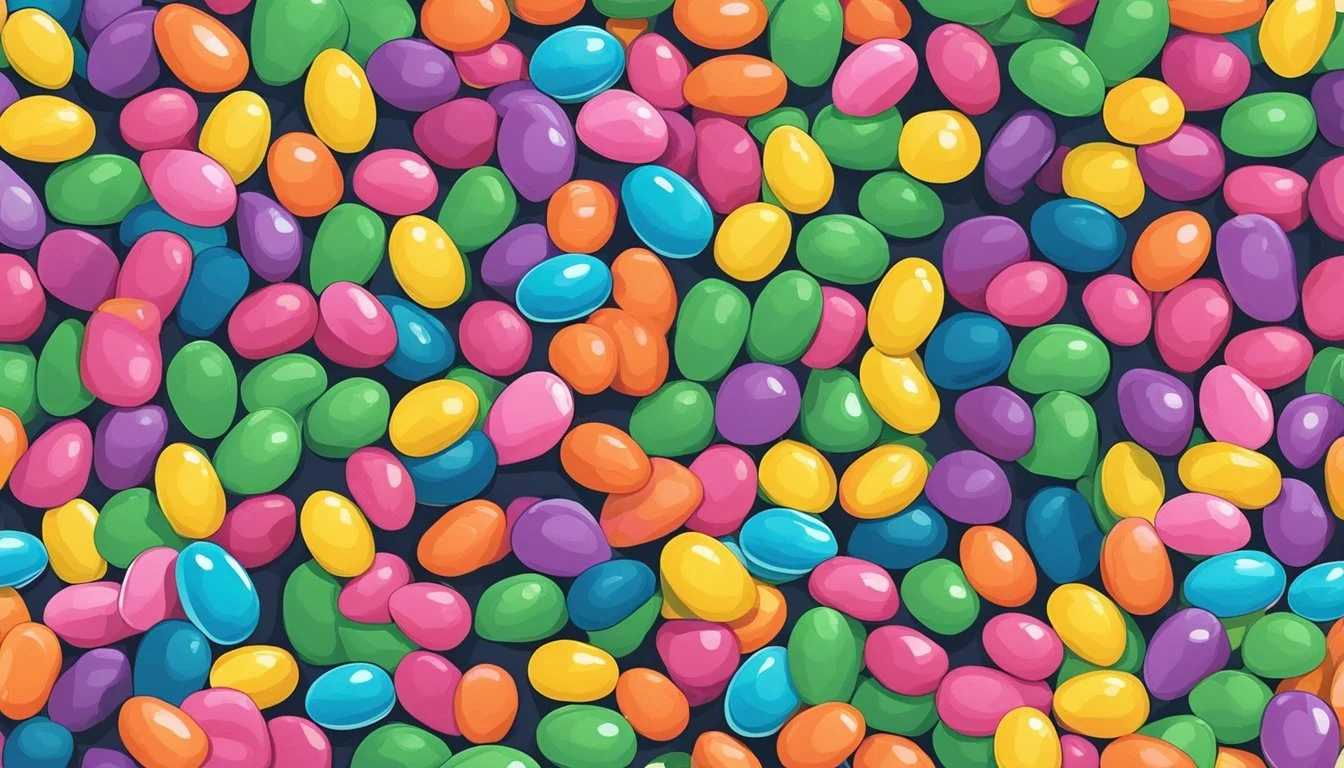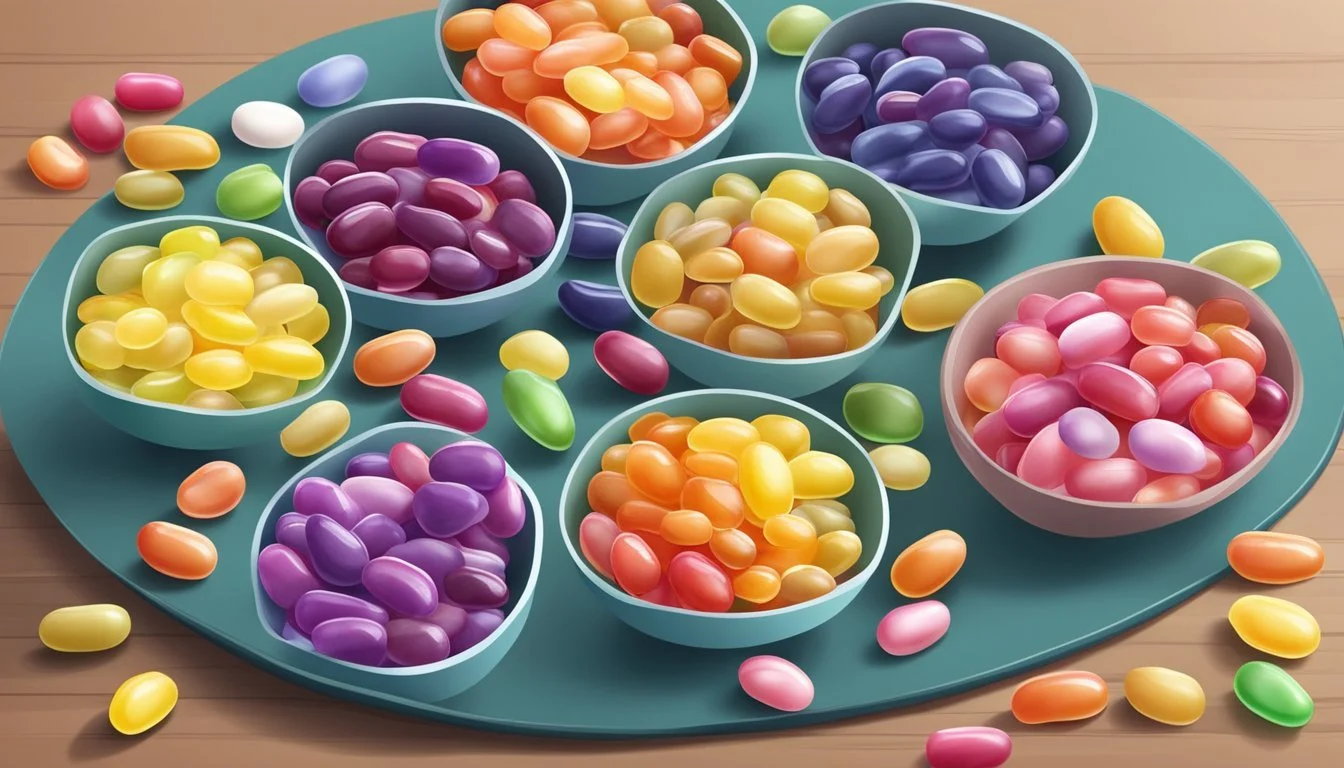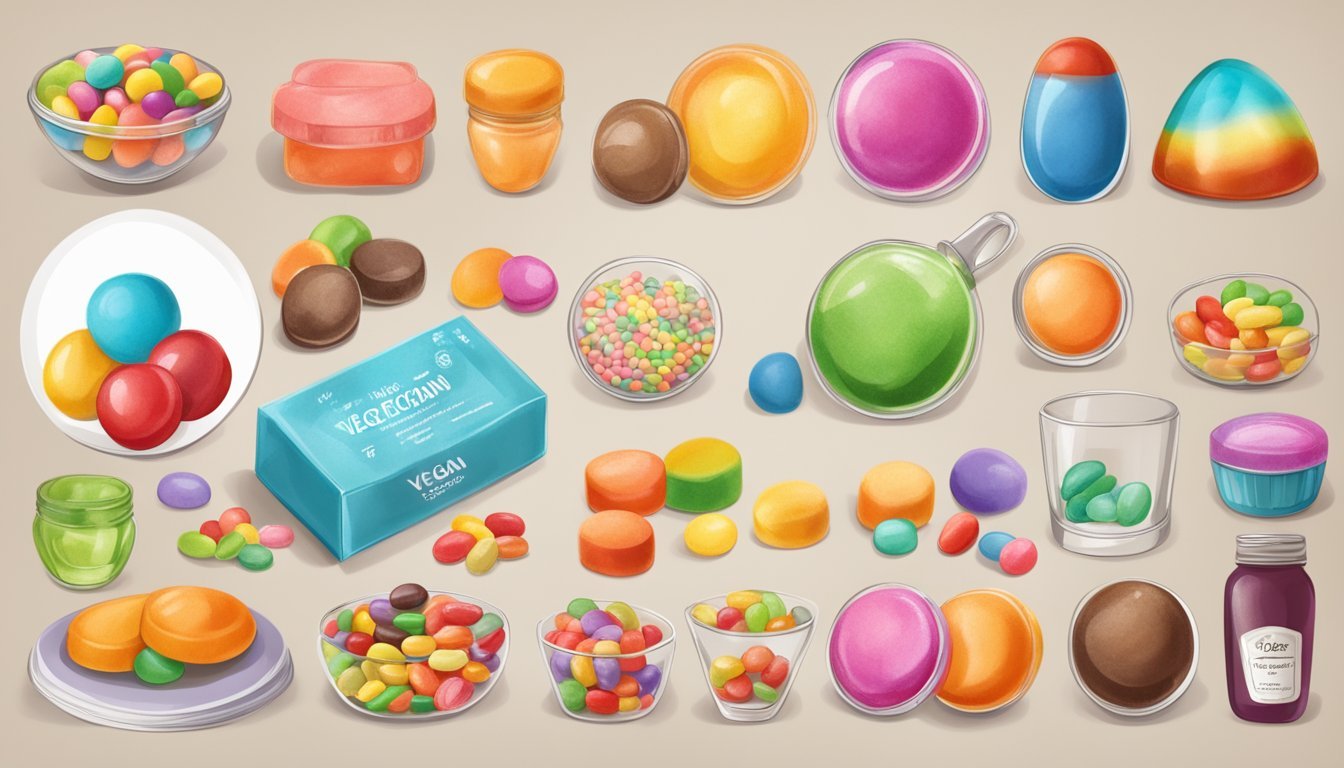Are Jelly Beans Vegan?
Understanding Their Ingredients and Varieties
Jelly beans are a beloved confectionery enjoyed by people all around the world, known for their vibrant colors and variety of flavors. However, for individuals following a vegan lifestyle, the question of whether jelly beans are vegan is of particular importance. Veganism involves abstaining from all animal products, which influences dietary choices and consumer behaviors. While it may seem that a simple candy such as the jelly bean would be free of animal derivatives, this is not always the case.
The vegan status of jelly beans hinges on the ingredients used in their manufacture. Common ingredients in jelly beans include sugar, tapioca or corn syrup, and starch, which are plant-based. However, many jelly beans on the market contain animal-derived ingredients such as shellac or beeswax, which are used to provide the shiny, glossy finish characteristic of the candy. These components are not suitable for a vegan diet.
The varying practices among different jelly bean brands mean that some select brands may offer vegan-friendly options, while the majority do not. Vegans seeking to indulge in jelly beans must scrutinize ingredient lists or seek brands specifically labeled as vegan, ensuring they align with a plant-based lifestyle. Consequently, though not all jelly beans are vegan, there are alternatives available that cater to those adhering to strict vegan principles.
Essential Considerations for Vegan Diets
When adopting a vegan diet, one must be vigilant about ingredients to ensure that their dietary preferences align with vegan principles. Rigorous scrutiny of product labels is critical for maintaining a plant-based lifestyle.
Defining Vegan
A vegan diet excludes all forms of animal products and by-products, which means no meat, dairy, eggs, or honey. It is a plant-based diet that relies on fruits, vegetables, grains, nuts, and seeds, as well as plant-derived proteins. Vegans also avoid less obvious ingredients derived from animals, such as gelatin and certain additives.
Importance of Ingredients Lists
For those on a vegan diet, reading ingredients lists is crucial:
Animal-derived ingredients may be present in unexpected products, such as candies like jelly beans.
Ingredients like gelatin (from animal collagen), beeswax, confectioner's glaze (shellac from the lac bug), and honey are not vegan.
Plant-based alternatives are available, such as pectin or other vegan-friendly gelling agents used in certain jelly bean brands.
By checking labels, those on a vegan diet can avoid accidental consumption of animal products and ensure their food choices are in line with their dietary preferences.
Understanding Jelly Beans
Jelly beans are a popular confectionery item known for their vibrant colors and wide range of flavors. They are composed of sugar, starch, and a gelling agent to create their signature chewy texture.
Overview of Jelly Beans
Jelly beans are small, bean-shaped sugar candies with a soft candy shell and a gel-like interior. They come in a plethora of flavors, ranging from the traditional fruit varieties to more exotic and contemporary ones. Historically, jelly beans have been associated with festive occasions, particularly Easter in the United States, due to their egg-like shape and bright appearance.
Typical Jelly Bean Ingredients
The primary ingredients found in jelly beans include:
Sugar: The main component, providing sweetness.
Starch: Often used to give jelly beans their structure.
Additional elements often include:
Gelling Agent: This can be gelatin (animal-based) or pectin (plant-based); however, the use of gelatin makes the product unsuitable for vegans.
Flavorings: Ranging from natural to artificial sources, these contribute to the diverse taste profiles of jelly beans.
Colorings: Both natural and synthetic dyes are used to create the characteristic vibrant colors of jelly beans.
Particular attention should be given to ingredients like confectioner's glaze and beeswax, both of which are derived from animal products and commonly used to give jelly beans a glossy finish. These ingredients are not vegan-friendly.
Non-Vegan Ingredients Common in Jelly Beans
Jelly beans often contain a variety of non-vegan ingredients derived from animals. These components are primarily used for texture, shell strength, and shine. Below are the specifics of common animal-based ingredients found in many jelly bean brands.
Gelatin and Collagen
Gelatin is a protein obtained by boiling the skin, tendons, ligaments, and/or bones of cows or pigs. It is frequently incorporated into jelly beans to give them a chewy, springy texture. Animal collagen, similarly derived, also contributes to the gel-like consistency, which is appealing in the confectionery industry.
Beeswax and Shellac
Beeswax is a substance made by bees to build their hives. In the context of jelly beans, beeswax serves as a glazing agent to create a shiny appearance. Shellac, on the other hand, is a resin secreted by the female lac bug. It provides a similar glossy finish to jelly beans but also is an animal derivative.
Confectioner’s Glaze and Bone Char
Lastly, confectioner’s glaze, which contains shellac, can be found coating jelly beans to enhance their visual appeal. Additionally, sugar used in jelly beans may be processed with bone char—charcoal made from animal bones—to achieve a pure white color. Although not found directly in the ingredients, this sugar refining process is a point of concern for vegans.
Assessing Vegan-Friendly Ingredients
When evaluating jelly beans for vegan suitability, one must focus on both the presence of plant-based ingredients and the exclusion of animal-derived substances.
Plant-Based and Synthetic Alternatives
Plant-Based Gelling Agents: For jelly beans to be deemed vegan-friendly, gelling agents derived from plants can be used instead of gelatin, which is animal-based. Pectin and agar are commonly used plant-based substitutes that provide the desired chewy texture. Pectin is derived from the cell walls of fruits and is often used in making jams and jellies, while agar is obtained from algae and offers a similar gel-like consistency.
Synthetic Colorants and Flavors: Instead of colorants or flavors that may have animal origins, manufacturers may opt for synthetic alternatives that are produced in a lab. These synthetics are devoid of animal derivatives and are suitable for vegans.
Starches: Tapioca and cornstarch are plant-derived thickeners often present in vegan jelly beans. They serve as an alternative to animal-based ingredients and are used to achieve the candy's form and texture.
Common Vegan Additives
Carnauba Wax: A shiny coating on jelly beans is often achieved with carnauba wax, a plant-based substance extracted from the leaves of the carnauba palm. It is a common vegan additive used for glazing.
Flavor and Sweetness Solutions: Vegan jelly beans might include natural fruit juices for flavoring, while the sweetness is typically derived from sugar beets or cane sugar. It is important to ensure that the sugar is not processed with bone char, a non-vegan filter sometimes used in sugar refinement.
By carefully assessing these components and their origins, consumers can determine if their jelly bean choice aligns with a vegan lifestyle.
Health Aspects and Lifestyle Choices
When considering jelly beans from a vegan perspective, it is imperative to understand their composition not only from an ethical standpoint but also in terms of health implications and lifestyle alignment. This section outlines the impact of sugars and additives present in jelly beans, along with the nuances pertaining to food colorings.
The Impact of Sugars and Additives
Jelly beans are typically high in sugars, which is a point of concern for health-conscious consumers. The primary components of jelly beans include sugar, tapioca syrup, or corn syrup, and starch. A high intake of these sugars can lead to health concerns such as diabetes and obesity. Additionally, additives like beeswax and carnauba wax are used for texture and shine, which on top of being non-vegan, can have an undefined impact on health due to their origin and processing.
Understanding Food Colorings
The vibrant colors of jelly beans are primarily achieved through food colorings, which may be synthetic or derived from natural sources. While natural colors are generally perceived as a healthier alternative, they can still cause allergic reactions in sensitive individuals. Artificial colors have been scrutinized for potential adverse health effects, and some may want to avoid them due to their chemical composition. It is essential for consumers to examine the ingredient list to ensure that the colorings align with their health standards and vegan lifestyle.
Identifying Vegan Jelly Bean Brands
When choosing vegan jelly bean options, it's essential to consider both widely recognized brands that offer vegan-friendly products, and the importance of scrutinizing product labels to ensure they align with vegan standards.
Popular Vegan Jelly Bean Options
YumEarth Organic Sour Beans are a well-known choice for those seeking vegan jelly beans. These organic jelly beans are certified vegan and provide a tangy twist with their sour flavor. Another option for vegan-friendly jelly beans is the Jolly Rancher's Jelly Beans, notable for excluding animal-derived ingredients such as gelatin, beeswax, or shellac, and thus catering to a vegan diet.
YumEarth: Offers organic, vegan candy options, including their sour beans.
Jolly Rancher: Recognized for jelly beans that align with vegan standards.
Reading Labels for Assurance
To ensure jelly beans are vegan, meticulous attention to the ingredient list is key. Look for labels that clearly state "vegan" or "suitable for vegans". Be vigilant for non-vegan additives that may not be obvious, such as shellac or beeswax, especially in non-explicitly vegan brands such as Starburst Jelly Beans.
Example of ingredients to avoid:
Gelatin
Beeswax
Shellac
Confectioner's Glaze
By carefully selecting brands like YumEarth and examining label details, consumers can enjoy delicious vegan jelly bean experiences.
Production Processes and the Environment
In the production of jelly beans, the manufacturing processes and the impact on the environment are critical considerations. Both the method of production and the sourcing of ingredients can have significant ecological repercussions.
Jelly Bean Manufacturing
The manufacturing of jelly beans begins with a mix of ingredients that are heated and formed into the bean shape. Ingredients typically include sugar, tapioca or corn syrup, and starch. A plant-based alternative is organic sour beans, which avoid animal by-products and potentially reduce chemical usage. The process may involve:
Mixing: Combining all base ingredients into a homogenous mixture.
Molding: Shaping the mixture into the traditional bean shape.
Hardening: Allowing the beans to set and develop a hard outer shell.
Polishing: Coating the beans to achieve a glossy finish.
It should be noted that not all jelly beans are created equally in terms of vegan compliance. Some utilize gelatin for texture, while others may use beeswax or confectioner's glaze, which are animal-derived, thus not vegan.
Environmental Considerations
Production of jelly beans can have several environmental considerations:
Deforestation: The demand for palm oil, used in some confectionery as a cheap alternative to other fats, can lead to deforestation.
Energy Use: The energy-intensive production process can lead to increased carbon emissions.
Waste: Effluents from factories can contribute to pollution unless properly managed.
Manufacturers can mitigate some environmental impacts by:
Utilizing renewable energy sources for manufacturing processes.
Sourcing ingredients like sugar and starch from sustainable farms that employ methods to reduce deforestation.
Adopting waste management strategies that minimize emissions and effluents into the environment.
It's important for manufacturers to balance product quality with environmental responsibility.
Evaluating Alternatives to Jelly Beans
For vegans or those looking to avoid animal-derived ingredients, it is important to consider alternative options that are available in the market as well as the possibility of creating their own treats. These options offer the satisfaction of enjoying sweets without compromising on personal dietary principles.
Other Vegan Candy Choices
Vegan candy options have become increasingly accessible. A popular choice is Sour Beans, a tangy alternative to traditional jelly beans. They do not contain animal-derived ingredients like gelatin and often cater to various dietary preferences. Other alternatives include:
Organic Fruit Chews: free of artificial colors and flavors
Dark Chocolate Bars: look for those specifically labeled vegan
Gummy Sweets: made with pectin instead of gelatin
It is crucial for consumers to scrutinize labels as some products might still contain substances like shellac or beeswax, which are animal-derived.
DIY Vegan Jelly Bean Recipes
Creating one's own vegan jelly beans can be an enjoyable way to ensure that the sweets align with vegan dietary restrictions. These homemade recipes can utilize:
Agar Powder: a vegan gelatin substitute derived from seaweed
Fruit Juices: for natural flavoring and color
Complex sugars such as Maple Syrup or Agave Nectar: to satisfy the sweet tooth responsibly
For those seeking to test their culinary skills, the internet offers an assortment of step-by-step recipes that detail the candy-making process. Embracing homemade alternatives allows individuals to tailor flavors to their preferences and avoid any unwanted ingredients.



